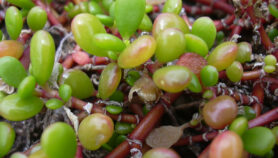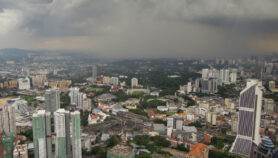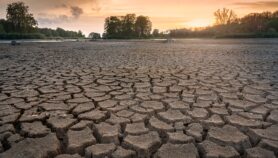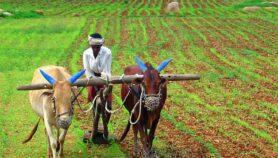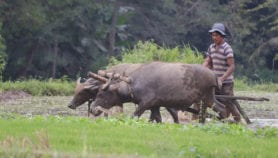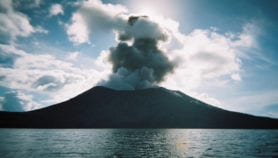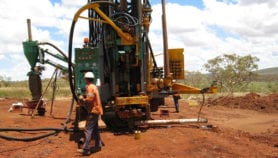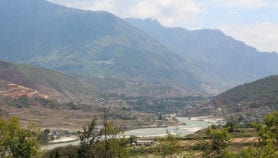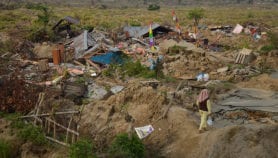11/09/19
UN urges soil organic carbon conservation to fight desertification
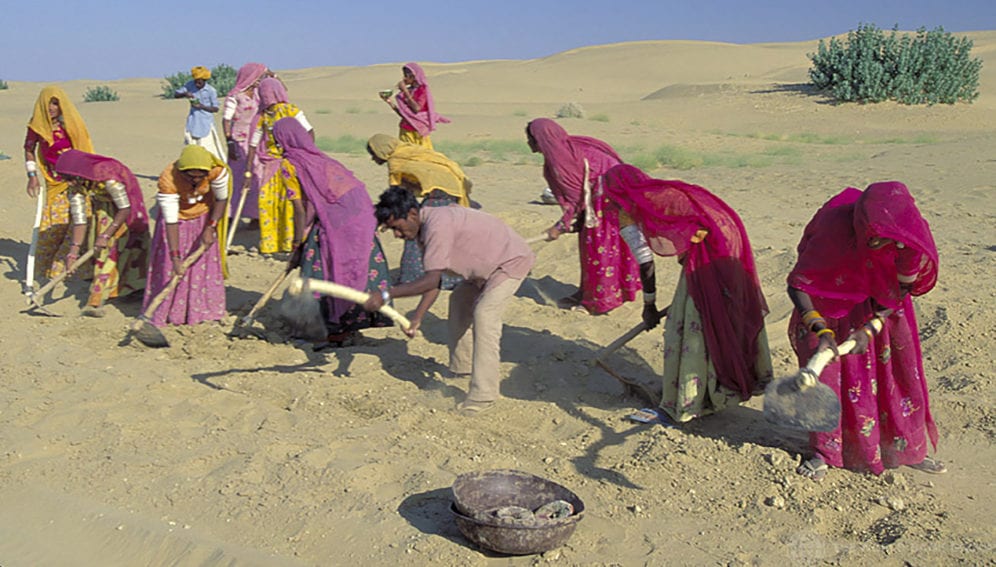
By: Ranjit Devraj
Send to a friend
The details you provide on this page will not be used to send unsolicited email, and will not be sold to a 3rd party. See privacy policy.
[NEW DELHI] Soil organic carbon (SOC) must be proactively conserved to prevent land degradation, says a science-policy interface report released at the 14th Conference of the Parties (CoP14) of the United Nations Convention to Combat Desertification (UNCCD) ongoing (2–13 September) in the Indian capital.
According to the UNCCD, 70 per cent of the world’s forests are now threatened by conversion to cropland and urbanisation — processes that greatly deplete SOC, a measurable component of soil organic matter and key to soil productivity. Particularly at risk are tropical forests, which declined at the rate of 5.5 million hectares annually between 2010 and 2015.
“This report will help member countries of the Convention identify sustainable land management technologies that are context-specific and also help estimate and monitor SOC for achieving land degradation neutrality and other sustainable development goals (SDGs),” Barron Joseph Orr, lead scientist for the UNCCD, tells SciDev.Net.
“The UNCCD report on SOC is especially important for South Asia because [of] its many and varied agro-climatic zones, each requiring specific interventions to prevent loss of SOC and retain moisture in the soil to nourish vegetation roots”
Himanshu Thakkar, South Asia Network on Dams, Rivers and People
SOC, according to Orr, has direct relevance to all three Rio conventions: the UNCCD, the Convention on Biological Diversity and the UN Framework Convention on Climate Change.
An important component of the global carbon cycle, SOC brings multiple co-benefits which support not only the SDG on building a land degradation-neutral world but also the SDGs on achieving zero hunger, good health and sanitation, climate action and gender equality.
“Because of its multifunctional roles and its sensitivity to land management, SOC is one of the three main global indicators of land degradation neutrality, the other two being land cover and land productivity,” says Ermias Aynekulu, an author of the report. “SOC, made up largely of decomposing animal and plant matter, is key to drought resistance, soil stability and organic crop production.”
The report proposes to encourage parties to the UNCCD to employ sustainable land management technologies to maintain or increase SOC, align SOC monitoring with national land degradation neutrality monitoring and share the guidance offered with farmers and other land managers.
According to the report, the management of SOC to support land degradation neutrality achievement will be most effective if it promotes the following: gender equality and inclusive development, empowerment of women to invest in natural resources, and capacity building of local institutions.
Emphasis is laid on accurate assessment of SOC since national capacities to measure and monitor are highly variable. It proposes that efforts be made to enhance the capacity of countries for spatio-temporal measurement and modelling of SOC to address data gaps and limitations in tools and models currently being used.
A spatio-temporal study carried out by EnvirometriX Ltd, Wageningen, the Netherlands, indicates that the greatest loss of SOC over the 2000–2015 period took place in the northern hemisphere followed by Brazil, Central Africa and Indonesia, where large swathes of natural forests have been converted to croplands.
A science policy brief accompanying the report offers ‘decision trees’ to guide efforts to predict change in SOC under different land management practices. It also seeks to support decision makers to pursue the right interventions in the “right locations at the right time and at the right scale” with the overall goal of land degradation neutrality achievement.
According to Marioldy Sanchez Santivañez, an observer to the UNCCD science-policy interface and forest evaluator for AIDER, a Peruvian NGO, developing and reinforcing capacities for soil sampling and implementing measurement and monitoring, as outlined in the report, “has the potential to contribute greatly to restoring soil carbon in many of the world’s land-degraded areas”.
Among the simple tools now available to evaluate SOC is the open access Soil Organic Carbon App developed by researchers at the International Center for Tropical Agriculture. The app can determine the amount of sequestered SOC and also assess the impact of good conservation practices over time.
Himanshu Thakkar, coordinator of the South Asia Network on Dams, Rivers and People, a Delhi-based NGO, says that retaining SOC is vital for South Asia, a peninsula which is estimated to lose 80 per cent of the rainfall it receives to the sea, leaching away valuable organic carbon and contributing greatly to desertification. “This is an area that [needs] urgent attention since more than 30 per cent of the landmass is now degraded.”The Indian sub-continent is particularly vulnerable. A study published in May by Science Direct said at least a third of the area around 18 river basins of the Indian sub-continent have become vulnerable to ‘vegetation droughts’, indicating drastic loss of soil moisture.
“The UNCCD report on SOC is especially important for South Asia because [of] its many and varied agro-climatic zones, each requiring specific interventions to prevent loss of SOC and retain moisture in the soil to nourish vegetation roots,” Thakkar tells SciDev.Net. “All that remains is for the governments to pick up the detailed guidelines and decision trees in the report and follow them.”
This piece was produced by SciDev.Net’s Asia & Pacific desk.


